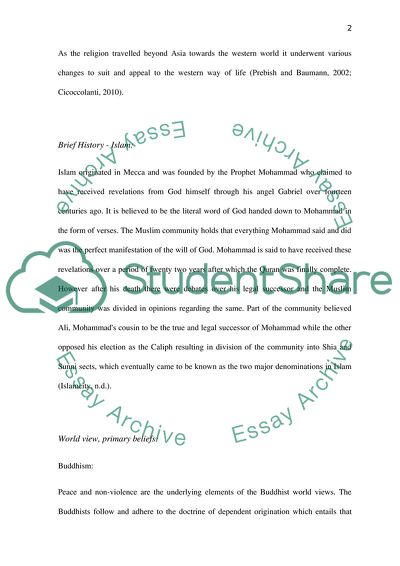Cite this document
(Comparative Analysis of Two World Religions: Buddhism and Islam Report Example | Topics and Well Written Essays - 3750 words, n.d.)
Comparative Analysis of Two World Religions: Buddhism and Islam Report Example | Topics and Well Written Essays - 3750 words. https://studentshare.org/religion-and-theology/1802545-religiongender
Comparative Analysis of Two World Religions: Buddhism and Islam Report Example | Topics and Well Written Essays - 3750 words. https://studentshare.org/religion-and-theology/1802545-religiongender
(Comparative Analysis of Two World Religions: Buddhism and Islam Report Example | Topics and Well Written Essays - 3750 Words)
Comparative Analysis of Two World Religions: Buddhism and Islam Report Example | Topics and Well Written Essays - 3750 Words. https://studentshare.org/religion-and-theology/1802545-religiongender.
Comparative Analysis of Two World Religions: Buddhism and Islam Report Example | Topics and Well Written Essays - 3750 Words. https://studentshare.org/religion-and-theology/1802545-religiongender.
“Comparative Analysis of Two World Religions: Buddhism and Islam Report Example | Topics and Well Written Essays - 3750 Words”. https://studentshare.org/religion-and-theology/1802545-religiongender.


